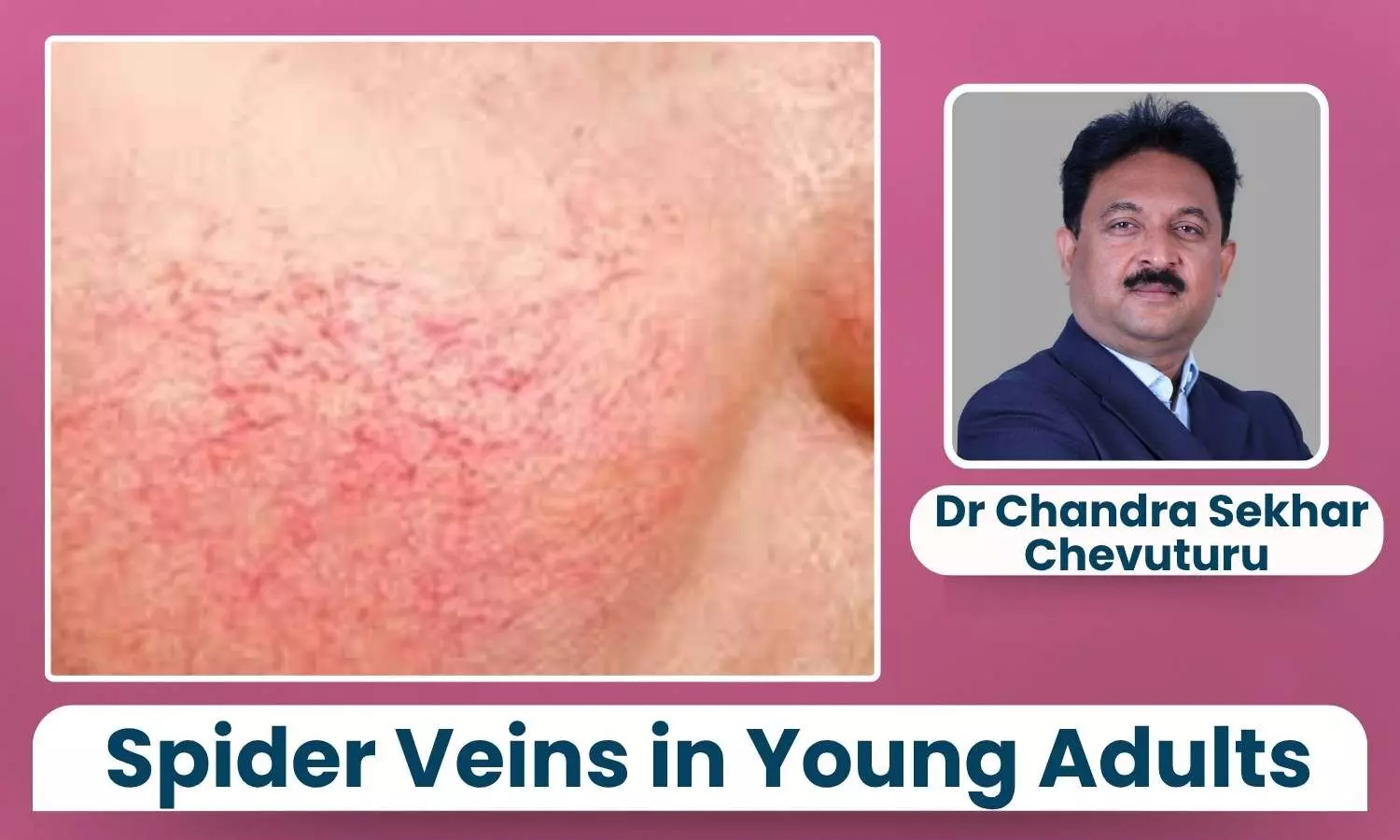When Cosmetic Becomes Clinical: Treating Spider Veins in Young Adults - Dr Chandra Sekhar Chevuturu

Spider veins, fine, red, or purple lines that form just beneath the skin's surface, are frequently regarded as a cosmetic inconvenience. However, for an increasing number of young adults, particularly women in their twenties and thirties, these veins are about more than just beauty. They can provide insight into early venous insufficiency, a condition that warrants further medical treatment.
As a vascular surgeon, I'm increasingly seeing patients who come in for aesthetic issues but leave with a better awareness of their vein health. This shift from just cosmetic to clinically relevant is where we must begin reframing the discussion.
What are Spider Veins?
Spider veins, also known as telangiectasias, are small, dilated blood vessels that run along the skin's surface. They are most common on the thighs, calves, and ankles, although they can also arise on the face. While they are normally painless, some people may suffer symptoms such as leg heaviness, weariness, itching, or slight oedema, particularly after prolonged standing.
They are distinct from varicose veins, which are bigger, bulging, and more prone to cause discomfort. However, both illnesses are caused by the same underlying issue: venous insufficiency, or inadequate blood flow in the leg veins as a result of weaker or broken valves.
Why are Young Adults Affected?
Spider veins do not appear with age, as is commonly believed. Genetics is important; if your father has visible veins at a young age, you are more likely to develop them as well. However, lifestyle variables also contribute.
- Prolonged standing or sitting (consider healthcare professionals, teachers, retail jobs, or desk-based vocations).
- Hormonal changes, particularly those caused by oral contraception or pregnancy.
- Obesity causes more strain on lower extremity veins.
- Intense physical exercise, particularly high-impact workouts without adequate leg support
- Wearing high heels frequently, which can impede calf muscle function and venous return.
Many young adults, particularly women, begin to notice spider veins between their mid-20s and early 30s. What starts as a cosmetic concern can become into a constant source of self-consciousness, especially in warmer climes where shorts and skirts are the norm.
When should Spider Veins be Evaluated Clinically?
Not every situation requires medical treatment, but certain indicators indicate that it's time to dig deeper:
- A familial history of varicose veins or deep vein thrombosis (DVT).
- Symptoms including pain, burning, swelling, or throbbing in the legs
- Veins that are spreading or expanding in quantity quickly
- Visible skin changes, such as pigmentation or dryness around the ankles.
- History of extended standing, sedentary work, or numerous pregnancies
A venous Doppler ultrasonography can help determine whether the deeper veins are functioning appropriately. This painless, non-invasive test can rule out concealed venous reflux, a condition that, if left untreated, can worsen over time.
Modern vein therapies are less invasive, outpatient-based, and customized to meet individual needs. Here's what we usually consider:
1) Sclerotherapy
This is the most popular treatment for spider veins. A medical-grade solution is injected into the afflicted veins, causing them to collapse and eventually fade. It is rapid, effective, and usually involves minimal downtime.
2) Laser Therapy
Laser treatment is an effective alternative for veins that are too small for needles or are located in sensitive locations, such as the face. It seals the vein using light energy.
3) Radiofrequency or Endovenous Laser Ablation
If an ultrasound reveals deeper vein difficulties, these advanced procedures can be employed to shut off troublesome veins with heat. These are more common in varicose vein situations, but they can also occur in intricate spider vein patterns.
Why does Early Intervention Matter?
Spider veins are easy to dismiss as solely cosmetic, especially when they arise in a young, otherwise healthy person. However, the earlier we diagnose venous insufficiency, the better we can treat its progression. In some circumstances, early treatment can help prevent larger varicose veins, chronic leg weariness, and even skin ulcers later on.
Furthermore, the psychological impact of visible leg veins, particularly in young adults, should not be underestimated. I frequently hear patients claim they avoid wearing particular outfits, feel uncomfortable at social gatherings, or feel older than their age. These are real concerns that should be addressed with compassion rather than rejection.
Prevention and Maintenance
While some risk factors, such as heredity, cannot be altered, lifestyle choices can help delay or lessen the formation of spider veins:
- Move frequently: Avoid sitting or standing in the same posture for too long.
- Elevate your legs, particularly at the conclusion of the day, to stimulate venous return.
- Use compression stockings to promote circulation and alleviate discomfort.
- Maintain a healthy weight: Less pressure on the legs reduces vein strain.
- Stay hydrated and active: Regular hydration and calf muscle activation promote vascular health.
For young adults who notice spider veins, it's important considering if this is just a cosmetic issue or the beginning of something more serious.
The good news is that today's treatments are safe, effective, and accessible. Even better news? Early detection and modest prevention measures can go a long way toward protecting your vein health.
If you're troubled by spider veins, whether because of their appearance or how they make your legs feel, don't hesitate to get them checked out. What appears to be a minor issue may actually be your body's subtle method of requesting attention.


